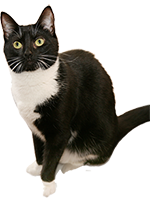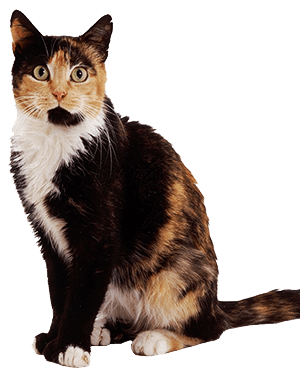The color patterns of animals are quite complex. They aren’t easy to apply to basic Mendelian genetics, like his purple and white flowers were. Cats have 19 pairs of chromosomes, with genes for coat color and coat length located on different chromosomes. These genes are responsible for the variety of cat coloration, such as spotting, white, black, and agouti. A dominant dilution gene can influence black coloration, creating cats with gray fur. If you want to learn more, this page on cat genetics explores all the ways the genes interact with each other.
My students do learn the basics of coat color and more specifically about X-linked genes. In cats, black and orange are codominant and located on the X chromosome. This means a female cat can receive both alleles and display a tortoiseshell pattern.
A separate gene for white can interact with this pattern and result in cats that are calico, a mix of orange, black and white. Both tortoiseshell and calico cats are almost exclusively female because they have two X chromosomes.
X-linked Genetics Worksheets

In my freshman classes, I don’t go into the multiple gene interactions. They get a basic worksheet on just the calico cats. For a more advanced class, they can learn about how the gene for white coloration interacts with the black and orange. They also explore eye color in fruit flies (not codominant).
In this advanced worksheet on cats, students explore first the tortoiseshell coloration. Then they explore how the white color allele interacts to create the calico pattern. My students learn to solve these types of problems (with multiple genes) using mathematics. We throw out the Punnett squares! (To be fair, anyone who has done a dihybrid cross with a Punnett square knows how tedious that is.)
The answer key is included on the second page if you’re struggling with the solution! It’s definitely challenging to do the tuxedo male crossed with a calico female. ( XBY Pp x XBXR pp )


